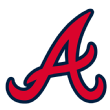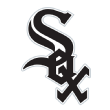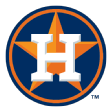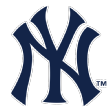The signing deadline for this year's drafted players has passed, with few surprises. Only one player (Tampa Bay Rays pick Drew Rasmussen of Oregon State) drafted on Day 1 failed to sign, and I've already reordered the top 50 prospects in the minors earlier in the month.
We've also seen a few major trades involving top prospects as the White Sox and A's continue their rebuilding efforts.
Here now is a very temporary ranking of the five strongest farm systems in baseball, subject to change even in the next week as we approach the trade deadline.
Top 50 prospects: Ronald Acuna (9), Kolby Allard (26), Ozhaino Albies (32), Kyle Wright (35), Luiz Gohara (39), Ian Anderson (41), Mike Soroka (49)
 I still have Atlanta at the top, because they have more depth of players who project to be average big leaguers or better in their system than any other organization -- and, by and large, their prospects have met or exceeded expectations this year.
I still have Atlanta at the top, because they have more depth of players who project to be average big leaguers or better in their system than any other organization -- and, by and large, their prospects have met or exceeded expectations this year.
Acuna broke out to become one of the top 10 prospects in baseball. Gohara, acquired in the offseason from Seattle, has taken a step forward in command and looks even more likely to be a long-term starter. Soroka and Allard jumped from low-A to Double-A and neither has missed a beat. Even Alex Jackson, acquired in a second trade with Seattle, has set a career high in homers and returned to catching part-time. And they had a strong draft class where they landed the top college arm (Kyle Wright) and one of the top prep bats (Drew Waters).
Their only major loss from the system is the graduation of Dansby Swanson, soon to be joined by Sean Newcomb. A few players have taken steps back this year -- Max Fried has struggling with command, surprising for someone so athletic, giving up four or more runs in 10 of 17 starts this year. Touki Toussaint continues to tease with plus stuff and erratic command and control, although he has been better in his past three starts. Patrick Weigel (No. 11 coming into the year) had Tommy John surgery in June. Travis Demeritte's early-season breakout didn't last. Fortunately for Atlanta, they stockpiled so many arms that they can fade a few blowouts or disappointments and still build a homegrown rotation good enough to contend, which they're well on their way to doing already.
Top 50 prospects: Eloy Jimenez (5), Michael Kopech (7), Yoan Moncada (13), Lucas Giolito (17)
 The White Sox keep adding prospects to their top 10, which is suddenly overcrowded in a problem that has physicists worldwide puzzling over how the Sox could fit 15 or more prospects into such an enclosed space. (The answer involves non-Euclidean geometry; I'd explain it, but you probably wouldn't understand.)
The White Sox keep adding prospects to their top 10, which is suddenly overcrowded in a problem that has physicists worldwide puzzling over how the Sox could fit 15 or more prospects into such an enclosed space. (The answer involves non-Euclidean geometry; I'd explain it, but you probably wouldn't understand.)
Two big trades this month added a couple of additional top-100 prospects into this system, including No. 5 overall prospect Jimenez, who becomes the White Sox' new No. 1 prospect. They had another solid draft, added Cuban prospect Luis Robert (playing the DSL, well below his level), and haven't seen anyone graduate by exceeding rookie eligibility limits yet.
One rare negative note is that a few of their top guys have had disappointing seasons. Zack Collins, their first pick in the 2016 draft, is hitting just .218/.363/.440 as a 22-year-old in high-A, ranking in the top 10 in the league in strikeouts (28.5 percent). Luis Basabe, the third prospect acquired in the Chris Sale trade, is hitting just .222/.322/.330 in high-A, although he's still only 20 and has time to turn it around. They also lost Zack Burdi to Tommy John surgery earlier in July. Carson Fulmer, their first pick in 2015, has been awful as a starter in Triple-A, with a 5.42 ERA and peripherals to match. Giolito has been fighting his mechanics on and off much of the year, the result of tinkering before he was traded last offseason, and has mixed in very promising outings with ones where he can't locate. I've always thought Fulmer needed to go to the bullpen, and the hitch in Collins' swing is a concern for his contact rate, so it's not all surprising, but I'm sure the White Sox were hoping for more from those guys this year.
Top 50 prospects: Fernando Tatis Jr. (15), Cal Quantrill (19), MacKenzie Gore (45)
 The Padres' top talent is years away from the majors, but the rebuild continues apace if you look at A-ball and below.
The Padres' top talent is years away from the majors, but the rebuild continues apace if you look at A-ball and below.
Quantrill is their only prospect of note in Double-A, but below that the system is loaded. Jacob Nix has been dealing in the hitter-friendly Cal League since his return from injury. Tatis remains among the top players in the Midwest League at age 18. Shortstop Luis Urias leads the Double-A Texas League in OBP at age 19. Their short-season clubs are loaded with high-ceiling talent from last year's international spending spree, including lefty Adrian Morejon, with two of those players, right-hander Michel Baez and outfielder Jorge Oña, already promoted to low-A and performing well. And they landed the draft's top left-handed pitcher in 18-year-old MacKenzie Gore.
They did lose two top-10 prospects to the majors in Manuel Margot and Hunter Renfroe, while their No. 1 prospect coming into the year, Anderson Espinoza, has missed the entire season with arm trouble. Shortstop Javier Guerra has had another miserable season at the plate and is going to be passed by a wave of shortstops coming up behind him, led by Tatis, Jordy Barley and Luis Almanzar. There's so much aggregate talent here, however, that they can afford some attrition and remain a top-five system.
Top 50 prospects: Kyle Tucker (16), Forrest Whitley (36), Franklin Perez (43), Yordan Alvarez (46)
 Because 2017 hasn't been good enough to the Astros, the team's farm system has, by and large, improved since the offseason, especially in terms of players already in the system performing well or showing more skills than previously believed.
Because 2017 hasn't been good enough to the Astros, the team's farm system has, by and large, improved since the offseason, especially in terms of players already in the system performing well or showing more skills than previously believed.
Tucker wrecked the high-A Carolina League, moved up to Double-A, and kept raking before back soreness put him on the DL last week. He already has 17 homers this year, and he still has a lot of room on his frame to fill out. Perez has pitched well in high-A at age 19. Alvarez, acquired last summer for Josh Fields, crushed low-A before a promotion a few weeks ago to high-A. Whitley is already pitching well in high-A at age 19, striking out 44 percent of batters there after a late June promotion. Derek Fisher would probably be in the majors for most clubs, but there's no room at the Inn at the Ballpark. And they added a top-10 talent in this year's draft with North Carolina right-hander J.B. Bukauskas.
This ranking may be the most temporary of all. The Astros are a lock for the AL West division title but could certainly trade from their minor-league riches to bolster the club for October, especially since they have so many bats who'll never crack the Astros' major-league lineup.
Top 50 prospects: Gleyber Torres (2)
 As much as the young players on the major-league roster have driven both the team's run at a playoff spot and the narrative around them -- perhaps you've heard of their right fielder, a certain "A. A. Ron Judge" -- the Yanks' farm system remains deep and should continue to provide GM Brian Cashman with fodder for future deals, as we've already seen this month in one major deal.
As much as the young players on the major-league roster have driven both the team's run at a playoff spot and the narrative around them -- perhaps you've heard of their right fielder, a certain "A. A. Ron Judge" -- the Yanks' farm system remains deep and should continue to provide GM Brian Cashman with fodder for future deals, as we've already seen this month in one major deal.
Torres had really blossomed before a freak injury ended his season, but I expect him to be back at full strength next spring and ready to challenge for a spot in the majors shortly thereafter. Chance Adams has taken a nice step forward and should help the big-league club this year in a rotation spot, while Jorge Mateo has salvaged what was a lost season after an undeserved promotion to Double-A Trenton (he hit just .240/.288/.400 while repeating high-A). Estevan Florial went from lottery ticket (18th in my preseason rankings) to prospect with a breakout year in low-A, although his strikeout rate is concerning, while his teammate, 6-foot-8 right-hander Freicer Perez, has impressed pro scouts looking at the Yanks' system for trade targets.
They did trade their No. 1 pick from 2016, Blake Rutherford, and 2013 first-rounder Ian Clarkin in last week's trade for bullpen help with the White Sox, and lost James Kaprielian to Tommy John surgery. I also wasn't that high on their draft class this year, which led off with two pitchers with violent deliveries, one of whom had Tommy John surgery in April. Albert Abreu, one of two pitchers acquired from Houston for Brian McCann, was off to a strong start before hitting the DL in May with a sore shoulder; he hasn't returned, but the other pitcher in the deal, Jorge Guzman, has been hitting triple digits for Staten Island. There are a lot of positives here, and the team continues to find value with later-round picks who don't necessarily blow you away on traditional scouting variables.
Honorable mention, in some order: St. Louis, Philadelphia, Cincinnati.
